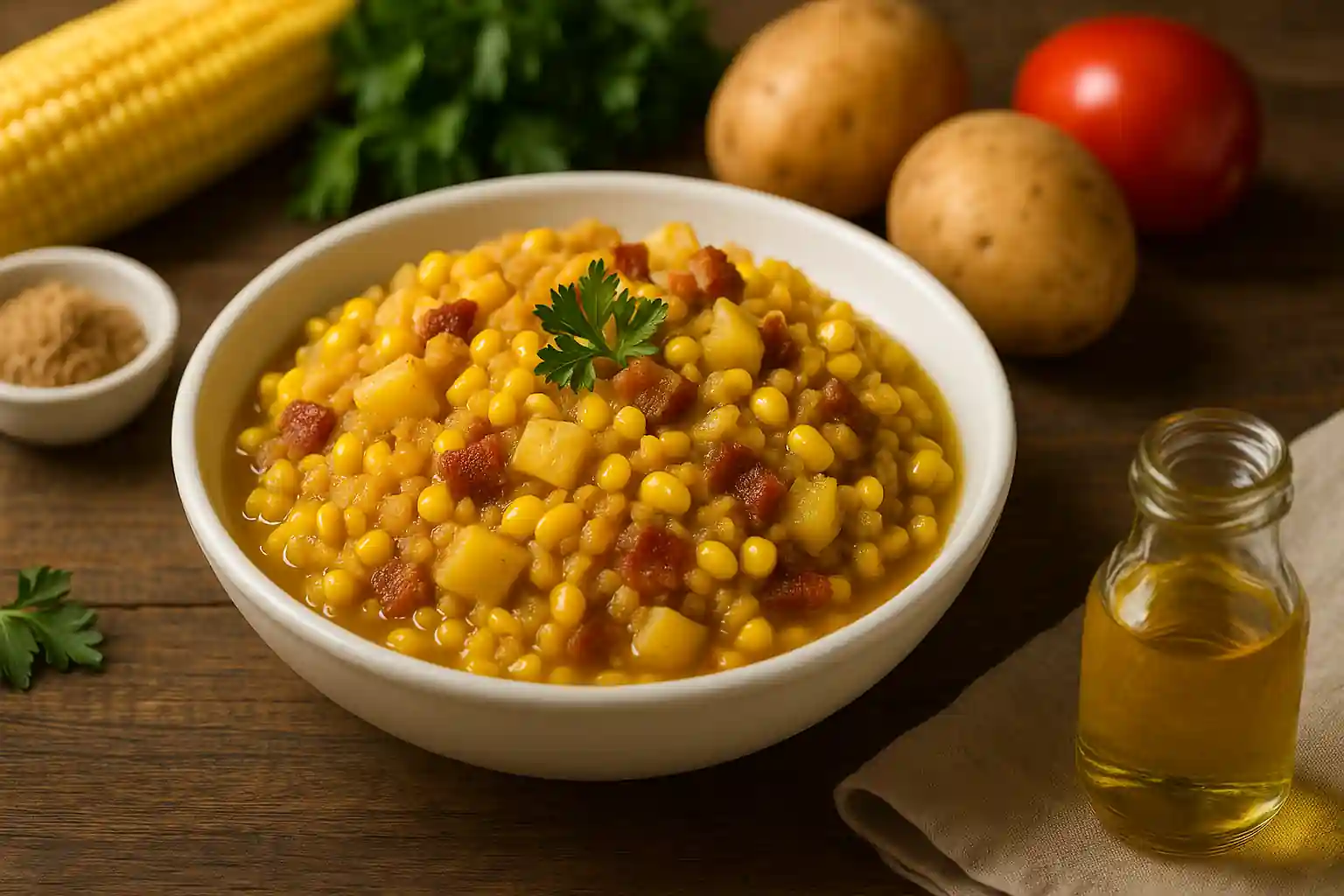Moonshine Mash Recipe: A Complete Guide to Home Distilling
Introduction
Moonshine—once synonymous with hidden stills in the Appalachian hills—is now enjoying a modern renaissance. Making moonshine at home, especially starting from a traditional moonshine mash recipe, has become a passionate hobby for many who enjoy exploring the roots of American distilling traditions. This guide will serve as a detailed, comprehensive reference for anyone looking to make moonshine at home using different methods, grains, sugars, and fermenting techniques.
From understanding what a grain mash is to learning about a sour mash, sweet feed, and sugar mash, we will cover every aspect of making your own moonshine. Whether you are just curious about the science of fermentation or are planning to create a moonshine batch with a 5 gallon still, this guide is your one-stop source for authentic knowledge and technique.
Moonshine Mash Recipe – Your Complete Guide
What Is Moonshine?
Moonshine refers to distilled spirits made without government oversight or tax. The term originally implied an illegal activity, but today, it often refers to high-proof, home-distilled spirits made for personal use. Traditional moonshine recipes use grains like corn, barley, and rye, and can vary widely by region and purpose.
You can legally make moonshine mash and even ferment it at home, but distilling alcohol without proper licensing is regulated in many countries, including the United States. It’s essential to understand your local laws before you start.
For an informational reference on legality and licensing, visit TTB.gov.
Understanding the Mash
The mash is a mixture of grains, water, and enzymes that are heated and fermented to convert starch into sugar. This sugar is later consumed by yeast to produce alcohol.
Grain Mash vs Sugar Mash
-
Grain mash uses real corn, barley, or rye and provides a traditional flavor profile.
-
Sugar mash, often called a sugar wash, uses cane sugar or white sugar for simplicity and ease of fermentation.
Both are effective, but grain mash delivers more flavor and tradition, especially when trying to make a classic American moonshine.
Grain Mash Recipe from Scratch
To make your own all grain mash, you’ll need:
Ingredients:
-
8.5 lbs of cracked corn (real or feed grade)
-
1.5 lbs of malted barley
-
5 gallons of water
-
1 tbsp of yeast nutrient
-
1 packet of distiller’s yeast
Instructions:
-
Heat 5 gallons of water to 165°F.
-
Slowly stir in the lbs of corn.
-
Hold temperature for 90 minutes while stirring the mash to prevent scorching.
-
Cool the mixture to 155°F, then add barley and stir well.
-
Let it sit for another hour.
-
Cool to 75°F.
-
Transfer to a fermenter, add yeast, and seal with an air lock.
This base will ferment over the course of 5–10 days.
Learn more about fermentation methods at Home Distiller.org.
Moonshine Fermentation Process
How Long Does Fermentation Take?
-
The fermentation process can take from 5 to 14 days depending on temperature, yeast strain, and sugar content.
-
Use a hydrometer to measure the ABV (alcohol by volume). When readings are stable and below 1.000, your fermented mash is ready for distillation.
How to Distill Moonshine
Equipment Needed
-
5 gallon still or 8 gallon pot still
-
Air lock
-
Thermometer
-
Siphon or spigot
Stripping Run vs Spirit Run
-
Stripping Run: Fast run to collect low wines (~30–40% ABV).
-
Spirit Run: Slow, refined run to collect high-quality moonshine.
Always discard the first 50–150ml per gallon batch, which contains methanol, a toxic by-product.
Thin Mash and Sour Mash Explained
What is Thin Mash?
A thin mash includes both grain and sugar—often used to improve alcohol yield in poor grain mashes.
What is a Sour Mash?
Using a portion of previously fermented mash (backset) in a new batch is known as a sour mash. This creates more consistent pH and flavor.
Moonshine Recipes and Variations
Classic American Moonshine Recipe
-
10 lbs cracked corn
-
2 lbs barley
-
6.5 gallons of water
-
Distiller’s yeast
This corn whiskey mash is a traditional American favorite, producing smooth white whiskey.
Sweet Feed Recipe
-
7 lbs of sweet feed (molasses-based animal feed with grains)
-
5 gallons of water
-
5 lbs of sugar
Mix and ferment for 7–10 days. Popular for its robust flavor.
Peach Moonshine Recipe
Want a fruity twist? Try this:
-
6 lbs fresh peaches (chopped and frozen)
-
6 lbs of sugar
-
1 tbsp of yeast nutrient
-
Water to 5 gallons
This batch creates a uniquely Southern-style spirit.
Sugar Mash or Sugar Wash
Quick and cost-effective:
-
10 lbs cane sugar
-
5 gallons warm water
-
1 packet of turbo yeast
Sugar mash requires no cooking—just mix and ferment. Ideal for beginners.
Apple Pie Moonshine
An infusion after distillation:
-
1 gallon of white whiskey
-
1 quart apple cider
-
1 quart apple juice
-
1 cup cane sugar
-
1 tsp cinnamon
Let it age for 2–3 weeks for a smooth, sweet drink.
For more on flavored moonshines, check Craft Distilling Institute.
Moonshine Ingredients and Their Role
Each ingredient contributes uniquely:
-
Corn: Body and flavor in corn whiskey
-
Barley: Enzymes to convert starch
-
Rye: Spice and bite
-
Sugar: Fuel for yeast
-
Malted barley: Richer enzyme profile
-
Water: Should be non-chlorinated
Home Distilling Safety and Legality
Is It Legal?
In the U.S., owning a pot still is legal, but using it to distill alcohol requires licensing.
Always check your local laws at TTB.gov.
Avoiding Methanol
-
Never consume heads (first part of distillate)
-
Use precise temperature control
-
Stick to reputable mash recipes
Make Your Own All Grain Recipe Tips
Batch Size Scaling
-
A 10 gallon batch needs ~8 lbs of grain
-
A 5 gallon bucket mash is more beginner-friendly
Optimal Yeast Use
-
Choose yeast with high ABV tolerance (15–18%)
-
Maintain stable fermentation temperatures (70–80°F)
Using Still’n The Clear for Distilling Education
“Still’n The Clear” is a term often used to describe achieving clean, smooth distillation. It’s also a growing community and educational resource for home distillers. Their forums and guides can help perfect your whiskey recipe or explore fermentation techniques.
Learn more at Still’n The Clear Resources.
Troubleshooting Common Mash Problems
Stuck Fermentation
-
Temperature too low
-
Not enough nutrients
-
Poor yeast viability
Cloudy Distillate
-
Run was too fast
-
Mash wasn’t filtered
-
Equipment wasn’t clean
Tips for Flavorful Whiskey Recipes
-
Use aged oak chips for post-distillation flavor
-
Infuse with apple pie spices
-
Blend multiple runs for smoothness
Final Notes on Distilling Moonshine at Home
Whether you’re crafting a corn whiskey mash, experimenting with peach moonshine, or simply exploring a grain mash recipe from scratch, this guide has provided a full view of every term and concept necessary to make moonshine safely and effectively.
Conclusion
Creating moonshine mash is both an art and a science. From understanding grain mash and sugar balance to using safe distillation techniques and creating unique recipes like apple pie moonshine, home distillers can enjoy a centuries-old craft from the comfort of their own homes.
Remember to always prioritize safety, quality, and legality in every batch. With the right knowledge and technique, your journey into the world of home distilling can be rewarding, educational, and delicious.
For further technical breakdowns and recipes, you can refer to educational sources like ScienceDirect on Distillation or browse through peer-reviewed publications for fermentation processes and ABV calculations.

